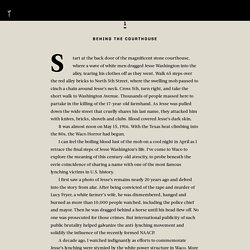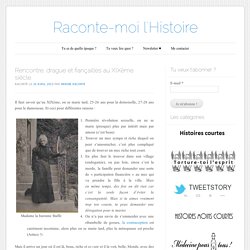

Olive Oatman, the Pioneer Girl Abducted by Native Americans Who Returned a Marked Woman. Beinecke Rare Book and Manuscript Library via Wikimedia // Public Domain About a century and a half ago, some Native American tribes of the Southwest used facial tattoos as spiritual rites of passage.

Through a series of strange tragedies (and some possible triumphs), a white Mormon teenager who was traveling with her family through the area in the mid-19th century ended up sporting one too, a symbol of a complicated dual life she could never quite shake. In 1851, the Oatman family, having broken from the Church of Jesus Christ of Latter-day Saints, was traveling through southeastern California and western Arizona, looking for a place to settle. As newly inducted Brewsterites—followers of Mormon rebel James C. Brewster—they’d been advised that California was, in fact, the true “intended gathering place” for Mormons, rather than Utah.
The other families elected to stay in Maricopa Wells until they had recuperated enough to make the journey, but Royce Oatman chose to press on. The Waco Horror — The Undefeated. In 1916, 10,000 people watched the lynching of 17-year-old farmhand Jesse Washington.

Corbis ArchivesOpening photo, The Undefeated’s Jesse Washington in Waco. 1Behind the Courthouse Start at the back door of the magnificent stone courthouse, where a wave of white men dragged Jesse Washington into the alley, tearing his clothes off as they went. Walk 65 steps over the red alley bricks to North 5th Street, where the swelling mob paused to cinch a chain around Jesse’s neck. Cross 5th, turn right, and take the short walk to Washington Avenue. It was almost noon on May 15, 1916. I can feel the boiling blood lust of the mob on a cool night in April as I retrace the final steps of Jesse Washington’s life. I first saw a photo of Jesse’s remains nearly 20 years ago and delved into the story from afar. A decade ago, I watched indignantly as efforts to commemorate Jesse’s lynching were stymied by the white power structure in Waco. Explore Mont Blanc with Kilian Jornet, Ueli Steck, Candide Thovex, and Google Maps.
Personne ou presque ne fait attention à lui, l'homme qui ne lève pas le poing sur cette photo mythique. Et pourtant... C'est peut être bien lui le plus grand héros de cette scène ! Peter Norman nous a quittés il y 9 ans.

L’écrivain italien Riccardo Gazzaniga a écrit un texte puissant en mémoire de ce sprinter Australien dont l’histoire est méconnue, contrairement à la photo, entrée dans la légende du sport.Préalablement publiée sur son site personnel, traduite en anglais sur GRIOT, nous avons décidé de la partager avec vous, en français. -----Parfois, les images peuvent nous tromper. Prenez cette photographie, par exemple. Vous la reconnaissez sans doute, elle est extrêmement célèbre et se trouve dans tous les livres d’histoire : c’est le geste de rébellion de deux coureurs afro-américains, John Carlos et Tommie Smith, brandissant le poing pour protester contre la ségrégation raciale, alors qu’ils se trouvaient sur le podium après avoir couru les 200 mètres lors des Jeux Olympiques de 1968, à Mexico. Eh bien cette photo m’a trompé, pendant très longtemps… Et il est probable qu’elle vous ait trompé, vous aussi.
Mais je me trompais. Peter Norman, le "troisième homme" Papua New Guinea: Asia's Fastest Growing Economy Burns Witches Alive. HISTOIRE DES ARTS. Rencontre, drague et fiançailles au XIXème siècle. Il faut savoir qu’au XIXème, on se marie tard, 25-26 ans pour la demoiselle, 27-28 ans pour le damoiseau.

Et ceci pour différentes raisons : Madame la baronne Staffe Première révolution sexuelle, on ne se marie (presque) plus par intérêt mais par amour (c’est beau)Trouver un mec sympa et riche duquel on peut s’amouracher, c’est plus compliqué que de trouver un mec riche tout court.En plus faut le trouver dans son village (endogamie), ou pas loin, sinon c’est la merde, la famille peut demander une sorte de « participation financière » au mec qui va prendre la fille à la ville. Vulgarisée et souvent vulgaire.